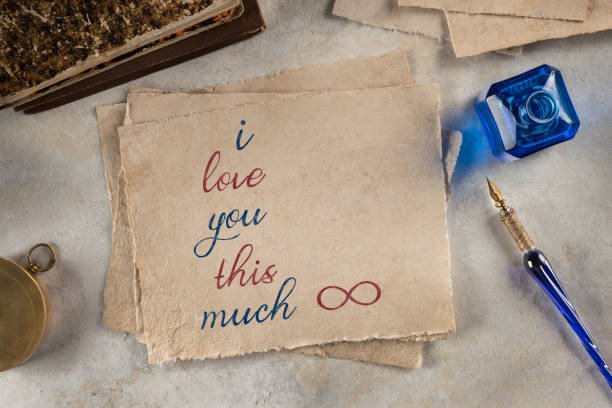Which Pen Is Better for Calligraphy: Dip Pen or Fountain Pen?
Calligraphy is a beautiful, ancient art that dates back thousands of years. Today, artists and calligraphy enthusiasts have a wide variety of tools at their disposal, but two of the most common choices are dip pens and fountain pens. Each of these pens has unique characteristics that can influence your experience as a calligrapher. In this comprehensive comparison, we’ll delve into the pros and cons of both options, helping you decide which pen is the better tool for your calligraphy journey.
What is Calligraphy?
Before we dive into the tools, it’s important to understand what calligraphy is. Calligraphy is more than just writing; it’s the art of creating letters that are aesthetically pleasing, often using specific styles or techniques. It involves rhythm, movement, and precision. Many calligraphy styles, such as Gothic, Italic, and Modern Calligraphy, require specific tools to achieve the unique stroke patterns and lines that define them.
Choosing the right pen can significantly impact the quality of your work and the ease with which you produce each letter. Hence, understanding the differences between dip pens and fountain pens is essential for both beginners and experienced calligraphers.
The Basics: Dip Pen vs Fountain Pen
What is a Dip Pen?
A dip pen is a traditional calligraphy tool that requires you to dip the nib (the metal writing tip) into an ink bottle every few strokes. The pen has no internal ink reservoir, so ink flow is manually controlled by how often you dip the nib into the ink. Dip pens come in a wide range of nib styles, sizes, and materials, giving the calligrapher flexibility over line thickness and style.
What is a Fountain Pen?
A fountain pen, on the other hand, is a more modern writing instrument with an internal ink reservoir. The ink is fed to the nib through capillary action, meaning you don’t need to dip the pen into an ink bottle every time. Fountain pens offer more convenience and can be used for extended writing or calligraphy sessions without frequent interruptions. Most fountain pens are refillable, using either ink cartridges or converters that allow them to be filled directly from an ink bottle.
Key Considerations in the Dip Pen vs Fountain Pen Debate
1. Control and Precision
When it comes to control and precision, dip pens offer an edge. Since you’re manually applying ink to the nib, you have a great deal of control over the amount of ink applied and the thickness of your strokes. Dip pens are highly sensitive to pressure changes, which allows calligraphers to create thick downstrokes and thin upstrokes with ease.
The versatility of nibs also plays a key role here. Dip pens come in pointed nibs, broad-edged nibs, and flexible nibs, each offering different stroke characteristics. Flexible nibs, for example, are perfect for scripts that require varying line thickness, such as Copperplate or Spencerian styles.
In contrast, fountain pens offer less variation in stroke width. While they still provide a good level of control, they aren’t as responsive to changes in pressure compared to dip pens. However, some fountain pens come with flexible nibs that can somewhat replicate the behavior of a dip pen, though not to the same extent.
2. Ink Variety and Customization
With a dip pen, you have access to a virtually unlimited range of inks. You can use any type of ink—calligraphy ink, India ink, or even acrylic ink—without worrying about clogging or damaging the pen. Dip pens also allow you to experiment with ink viscosity and mix colors more easily, giving you more creative freedom.
On the other hand, fountain pens require special fountain pen ink. Fountain pen ink is typically thinner and water-based to prevent clogging the feed mechanism. While there is still a wide range of colors and ink types available, the selection is more limited compared to what you can use with a dip pen.
3. Convenience and Portability
One of the major advantages of a fountain pen over a dip pen is its convenience. Fountain pens have an internal ink reservoir, meaning you can write or practice calligraphy for extended periods without needing to pause and refill the nib. They are also easier to carry around, making them a better choice for calligraphers who like to work in different locations. You don’t need to worry about carrying an ink bottle with you or dealing with the mess that can come from spilled ink during travel.
In contrast, dip pens require constant dipping into ink, which can be cumbersome for beginners and can break the flow of your work. Additionally, since the nib must be dipped frequently, there is always a risk of spilling ink. For artists who prioritize portability and ease of use, this is a significant drawback of dip pens.
4. Line Variations and Style
One of the reasons why many calligraphers prefer dip pens is their ability to produce a wide range of line variations. Depending on the nib you use, you can create sharp, delicate lines or broad, sweeping strokes. The flexibility and wide selection of nibs give dip pens an edge when it comes to artistic styles like flourishing or traditional scripts.
Fountain pens, while versatile, do not offer as much flexibility in terms of line variation. They are more consistent and are best suited for simpler styles of calligraphy that don’t require a lot of line width changes. However, certain specialty fountain pens come with flexible nibs or oblique nibs that can mimic some of the stroke variations found with dip pens.
5. Maintenance and Durability
Fountain pens are relatively easy to maintain compared to dip pens. They require periodic cleaning to prevent ink from clogging the feed mechanism, but this is usually straightforward. As long as you use the appropriate ink and follow the manufacturer’s care instructions, a fountain pen can last for many years.
Dip pens, however, require more frequent cleaning since the nib comes into direct contact with ink and dries out more quickly. If not properly cleaned after each session, dried ink can accumulate on the nib, affecting its performance. This makes dip pens slightly more time-consuming to care for, but they can also be incredibly durable, with some calligraphers using the same dip pen for decades.
6. Cost
The cost of each pen varies depending on the brand and the quality of the materials. Dip pens are generally more affordable than fountain pens. The initial investment in a dip pen is usually lower because the nib and handle are sold separately and can be purchased for a modest price. Additionally, the ink for dip pens is generally less expensive since you have a wider variety to choose from.
Fountain pens, particularly high-quality models, can be a significant investment. A well-made fountain pen with a gold nib, for example, can be quite expensive. While there are more affordable options on the market, they still tend to cost more than dip pens. Moreover, the ongoing cost of ink cartridges or bottles of fountain pen ink adds to the overall expense over time.
7. Learning Curve
For beginners, the learning curve can be an important factor in choosing between a dip pen and a fountain pen. Dip pens require more practice and patience due to the need to dip the pen frequently and control the ink flow manually. The constant interruption to dip the nib can be frustrating for new users who are still mastering their technique. Moreover, controlling the pressure and ink flow takes time to perfect.
Fountain pens are generally easier for beginners to use. Since the ink flows automatically, you can focus more on your strokes and technique rather than constantly reloading the pen. The consistent ink flow also makes it easier to learn basic calligraphy styles before moving on to more complex techniques.
When to Choose a Dip Pen
There are several reasons why a calligrapher might choose a dip pen over a fountain pen. If you value control over your strokes, enjoy experimenting with different ink types, and want the widest possible range of line variations, a dip pen is likely the best choice for you. Additionally, if you’re focused on traditional calligraphy styles like Copperplate or Spencerian, which require fine control and flexible strokes, the dip pen is almost essential.
Pros of Dip Pens:
- More control over ink flow
- Greater variety of nibs
- Access to a wider range of inks
- Ideal for traditional scripts and flourishing
Cons of Dip Pens:
- Requires frequent dipping into ink
- Can be messier and less portable
- More maintenance required
When to Choose a Fountain Pen
Fountain pens are perfect for calligraphers who prioritize convenience, portability, and ease of use. If you want to practice calligraphy on the go, or if you’re looking for a pen that requires less maintenance and frequent ink reloading, a fountain pen is an excellent option. Fountain pens are also a good choice for beginners who want a smoother learning experience.
Pros of Fountain Pens:
- Convenient and portable
- Less maintenance required
- Consistent ink flow
- Ideal for long writing or calligraphy sessions
Cons of Fountain Pens:
- Limited line variation
- Restricted to specific ink types
- Higher upfront cost
Conclusion: Which Pen is Better?
In the dip pen vs fountain pen debate, there is no clear winner—it ultimately depends on your personal preferences and the type of calligraphy you wish to practice. If you’re seeking maximum control, line variation, and artistic freedom, a dip pen is your best bet. On the other hand, if convenience, portability, and ease of use are more important to you, a fountain pen may be the better option.
For many calligraphers, the ideal solution is to use both tools, depending on the specific project or style they are working on. Experimenting with both types of pens will give you a better sense of their strengths and weaknesses, helping you become a more versatile and skilled calligrapher.
click Here to visit the website






